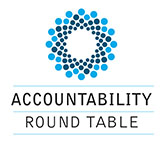SECTION 1. UNPACKING THE RULE OF LAW, ACCOUNTABILITY AND THE PUBLIC TRUST
4. DOMESTIC AND INTERNATIONAL RULE OF LAW
Bingham emphasises that the ideal of the Rule of Law and its value does not stop at borders. He is in good company! At the 2005 United Nations World Summit, member states unanimously recognised the need for ‘universal adherence to and implementation of the Rule of Law at both the national and international levels’ and ‘reaffirmed their commitment to “an international order based on the Rule of Law and international law.”’[i]
Over 60 years ago, President Eisenhower said:
“The time has come for mankind to make the Rule of Law in international affairs as normal as it is now in domestic affairs. Of course the structure of such law must be patiently built, stone by stone. The cost will be a great deal of hard work, both in and out of government particularly in the universities of the world. Plainly one foundation stone of this structure is the International Court of Justice … [and] the obligatory jurisdiction of that Court. … One final thought on Rule of Law between nations: we will all have to remind ourselves that under this system of law one will sometimes lose as well as win. But … if an international controversy leads to armed conflict, everyone loses.”
More recently, there has been much talk of the necessity of a ‘Rules Based International Order’. Just under 100 years ago, Australia signed the Kellogg-Briand ‘Pact of Paris’ to outlaw aggressive war and beefed that up with the signing of the UN Charter and the ANZUS Treaty[ii], Article 1 of which commits the US and Australia to settle international disputes in which they may be involved in by peaceful means and to refrain from the threat or use of force.
The ratification of treaties represents the assumption of a legal obligation to comply with the terms of each such treaty. In this way, Australia subjects itself to the ‘international rule of law’.
We recognise that some treaties are ratified in bad faith (possibly even ‘utmost bad faith’ – ‘Uberrima mal fides’) and some countries would never have signed a given treaty if they thought that it might ever be enforced against them. One can hardly see that being pleaded in court! (This is relevant in judicial review, see below.)
So far the description of the Rule of Law is referred to as a ‘thin theory’ of the Rule of Law.[iii] ‘Thicker’ theories incorporate other governance values within the Rule of Law – particularly democracy and human rights. Bingham goes part of the way towards the latter. Raz sees the Rule of Law as a virtue relating to the way the law is administered. Democracy and human rights are different ‘virtues’ of law – relating to how they are made and their content. These virtues are mutually supportive and it is hard to have a full measure of any without a full measure of the other virtues.
Institutionally, the international Rule of Law is very much on the ‘thin’ side; Professor Simon Chesterman calls it ‘anorexic’! This does not mean that we should not recognise and build on the Rule of Law as it exists – noting that the content is generally good to inspirational, especially in human rights and the laws of war. Building the international Rule of Law is one of the great challenges of our time – and especially for lawyers, soldiers and both elected and appointed officials.
ART is committed to democracy and human rights (through both ‘thick’ and ‘thin’ theories). Australian politicians not only claim to support democracy and human rights but have signed up to a wide range of human rights instruments that include and expand on fundamental human rights.
In fact, Australia is a party to nine separate United Nations international human rights treaties. The most important of these treaties are the International Convention on Civil and Political Rights and the International Covenant on Economic, Social and Cultural Rights signed and ratified over 30 years ago. Despite these legal commitments to these treaties, in practice Australia’s compliance has been consistently defective. United Nations human rights treaty bodies have identified hundreds of ways in which Australia’s actions do not accord with international human rights standards and obligations. This is deeply regrettable. It demonstrates a careless and/or cursory attitude to international human rights rules and norms. The three key areas of international criticism have related to our nation’s shocking treatment of refugees and asylum seekers, discrimination and continuing impoverishment of Australia’s indigenous peoples, and the fact that Australia is the only Western Democracy in the world not to have enacted a statutory or constitutional Charter of Rights. This could be extended to a fourth area: that of response to climate change. If Australia is genuinely to be regarded as a nation governed in accordance with the international rule of law, these deficits must urgently be remedied.
[i] UN General Assembly, 2005 World Summit Outcome: resolution / adopted by the General Assembly, 24 October 2005, A/RES/60/1.
[ii] Security Treaty between Australia, New Zealand and the United States of America [ANZUS], signed 1 September 1951 (entry into force generally: 29 April 1952) ATS 1952 2.
[iii] Sampford seems to have been the first but this application of Rawls’ distinction between two kinds of theory of justice has since occurred to some other theorists quite independently. See Sampford, C Globalising the Rule of Law paper at Griffith University Symposium (19 August 2000), published in Sampford, C ‘Reconceiving the Rule of Law for a Globalizing World in S Zifcak (ed), Globalisation and the Rule of Law (Routledge 2005), 9-31
